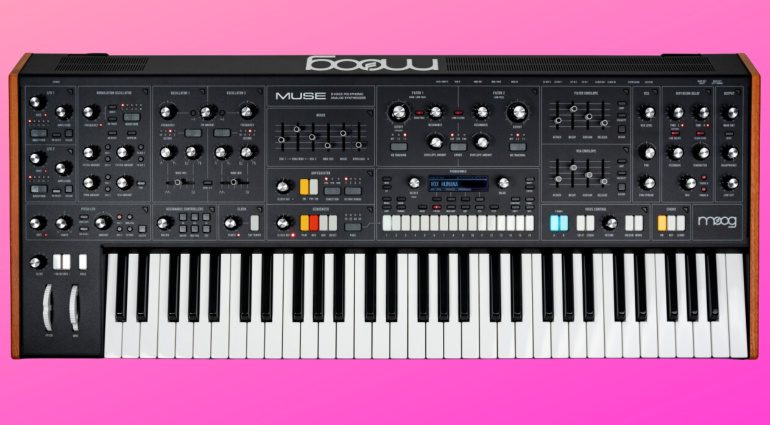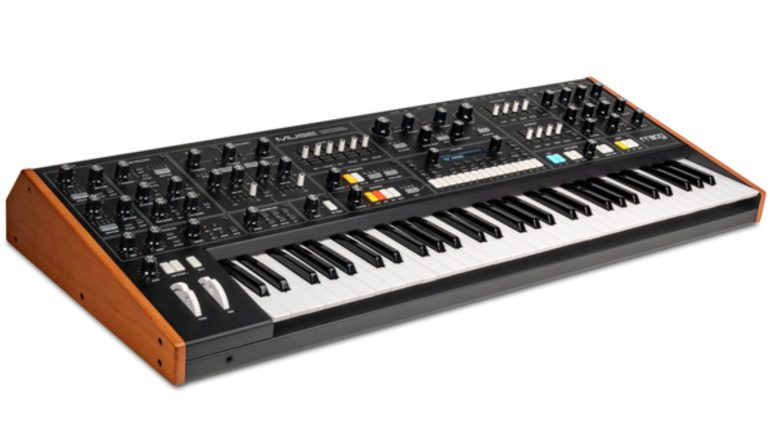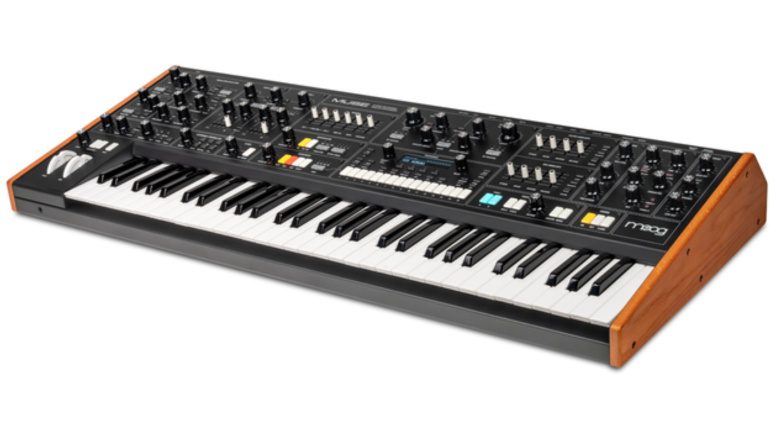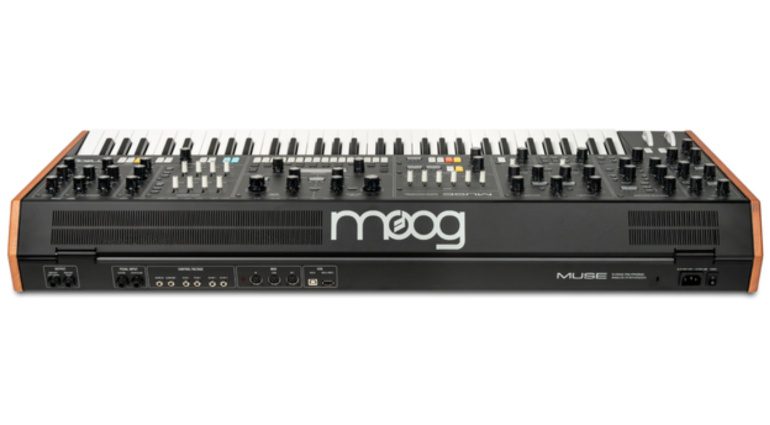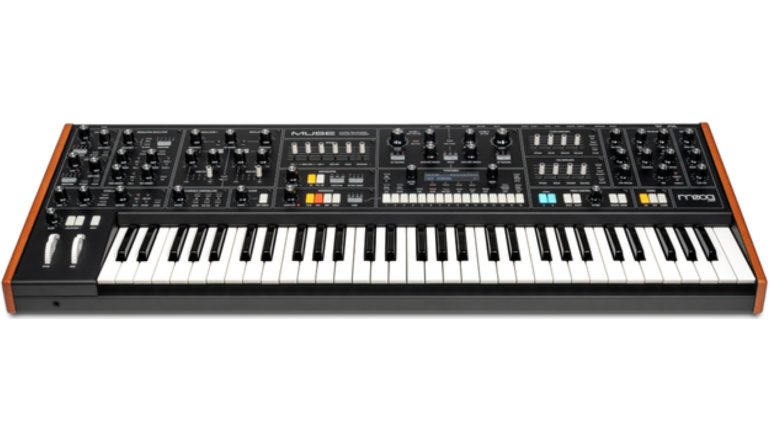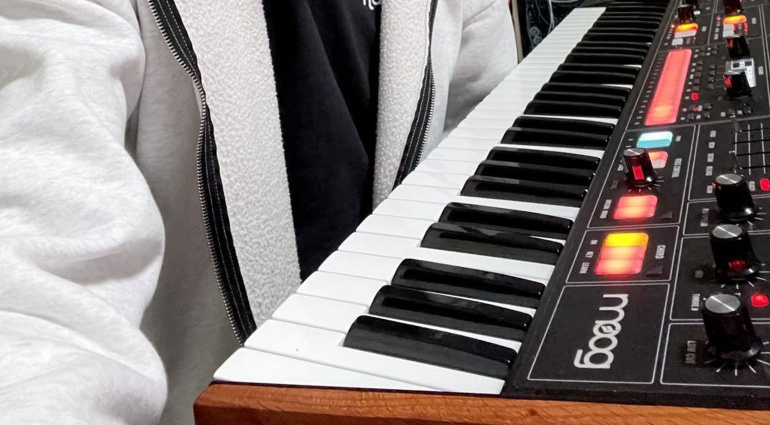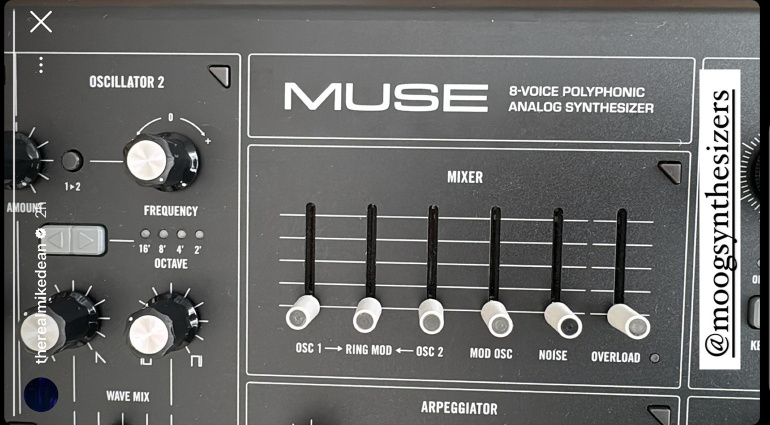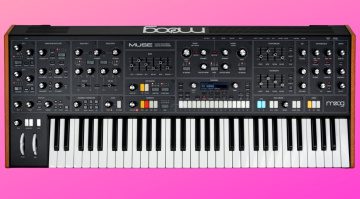Full beauty shots plus price and specs for the upcoming Moog Muse polysynth show two oscillators plus a modulation oscillator, two filters, three LFOs, two VCAs, a digital diffusion delay and Polymoog-style accents. Let’s go!
[July 16 2024] Somebody jumped the gun. A retailer in Norway accidentally went live with the Moog Muse. The page has since been taken down but not before we got pics, specs and a price. Boy, is this thing fully loaded.
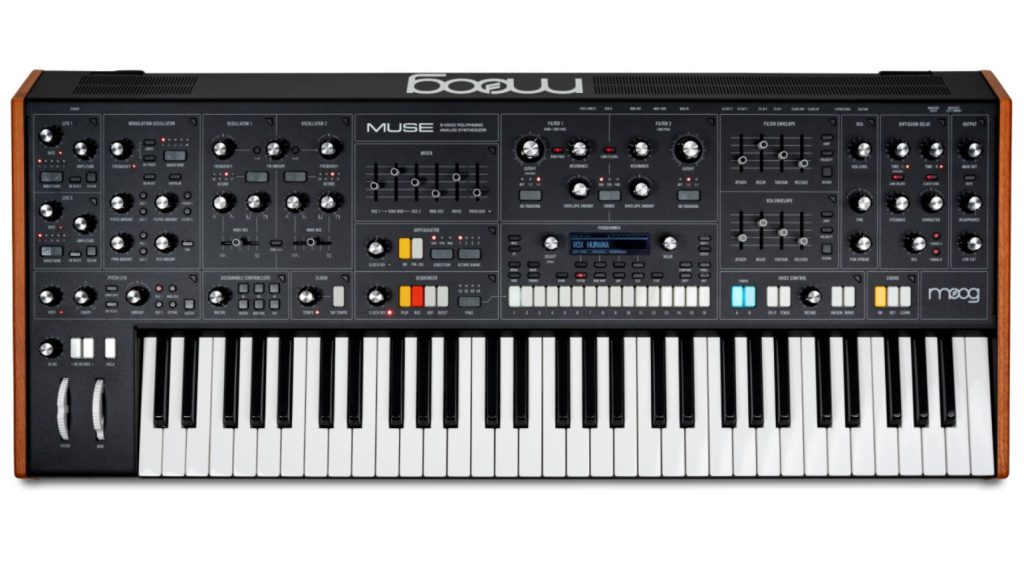
The eight-voice polyphonic Moog Muse has a lot. It’s got three oscillators, two with PWM and a selectable triangle/sawtooth mix, with one doubling as modulation. However, it’s not just an LFO but a ‘modulation oscillator’ with selectable waveforms (sine, sawtooth, reverse sawtooth, square, noise), an audio range switch, a unipolar switch, pitch modulation, filter modulation, pulse width modulation, VCA modulation and a panning switch. Yes, like the Matriarch, the Muse is stereo.
Moving on, there’s an analog mixer that allows you to combine the three oscillators plus ring mod, analog white noise and overload amount.
Moog Muse got Ladder filters – two of them – with one handling lowpass and the other both lowpass and highpass duties. You can link them, run them in parallel or series or… stereo.
Let’s keep going. There are two multi-trig looping ADSR envelopes with variable curves per stage; two LFOs plus a dedicated pitch LFO, and a comprehensive VCA with volume per timbre, pan position per timbre and pan spread per timbre.
Is there more? There’s more. Moog Muse got a Diffusion Delay, a digital configurable stereo multi-tap delay, plus an arpeggiator, 64-step sequencer, chord memory and modulation mapping with 16 modulation slots per timbre per patch with controllers and mathematical transform functions. Note that the Muse is 100% analog aside from the delay; you can choose to bypass the delay if you wish.
Connectivity includes DIN MIDI in/out/thru and MIDI over USB, CV and analog clock in and out as well as headphones and quarter-inch stereo outs.
Price of Moog Muse was listed as 47380 kroner which translates to around $4300 USD. No word yet on availability.
Keep in mind none of this is confirmed by Moog but this is all very exciting. And I know the cylindrical caps on the sliders are meant to recall the Polymoog but I used to own a Realistic Concertmate MG-1 and it had them too so that’s what I’m remembering and it’s got me really excited.
Moog Muse?
[April 7 2024] The Mirror is now the Moog Muse. Synth-loving music producer Mike Dean shared an image on his Instagram Stories showing the mixer section of what seems to be a new eight-voice polyphonic Moog. It clearly says Muse and not Mirror. This would be in keeping with Moog’s female-centric naming scheme, particularly if the new instrument really is a polyphonic synth based on Matriarch architecture, as rumoured.
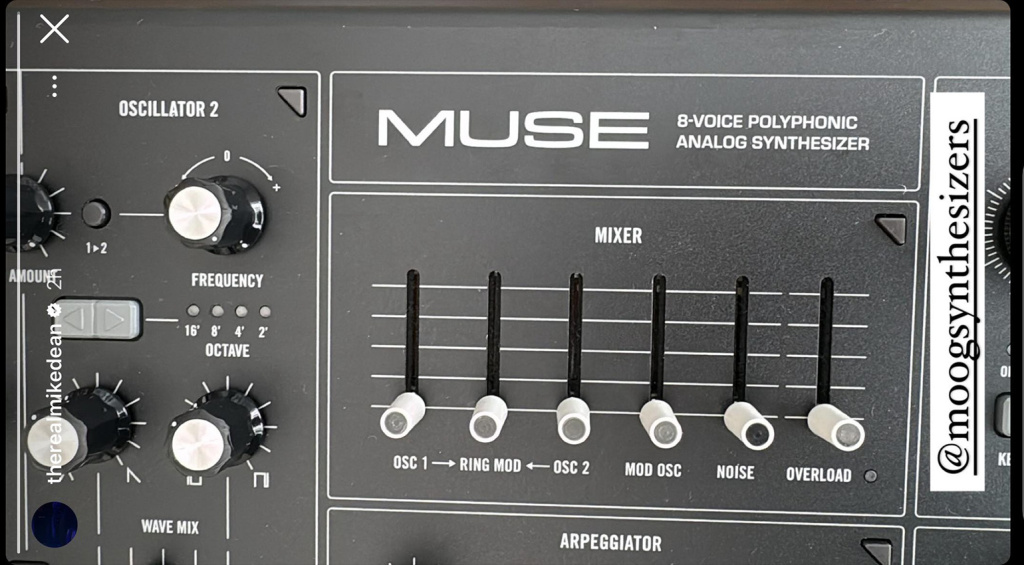
Looking at the picture, which seems to show the mixer section of the panel, we can see that it has two oscillators, ring modulation, an oscillator modulation slider, noise and something tantalizingly called “Overload.” Below the mixer, there appears to be an arpeggiator. The shape and styling of the sliders are very Polymoog-esque.
Keep in mind that nothing about this release is confirmed and it could all come to nothing. But an affordable polyphonic Moog is certainly something to get excited about – even just the possibility of one.
(Original article): With all the hoo-har around Moog and the InMusic buyout, it’s great to get positively excited about the possibility of a new Moog synth. Apparently, it was seen as part of the huge array of synths that were on stage for Usher’s halftime show. I’m not sure about that. There are certainly a lot of recognisable Moog products on stage, but you’ve got to have a keen eye to spot a previously unreleased one.
Mystery Mirror Moog
Regardless, Andrew Huang has thrown embargoes to the wind by posting a selfie of him sitting in front of an unknown Moog synth. What could it be? Andrew isn’t telling us – yet. Reports from the ether suggest that it will be called the Moog Mirror, it will have 8-voices and is based on Matriarch architecture.
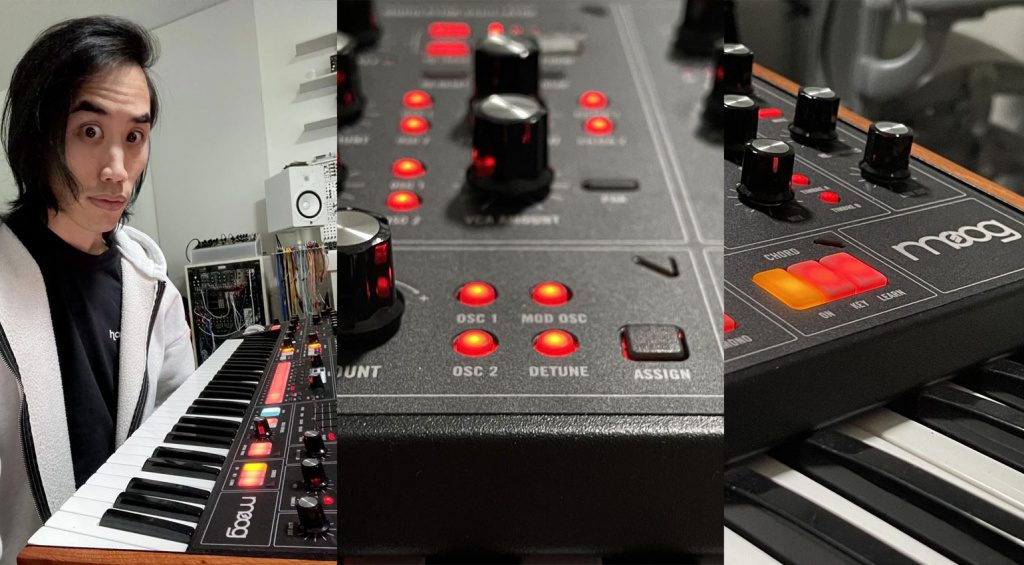
What we can see is a bunch of chewably lit, lozenge-sized buttons, a close-up of some classic Moog knobs and metal panelling and a five-octave keyboard with wooden cheeks. It looks very smart. It doesn’t look like something as high-end as a Moog One or MemoryMoog, in fact for me it reflects more of a Prophet-5 sort of vibe. There is a screen you can just see, and those buttons are likely to be preset selections. There’s a good bunch of controls, but not a crazy amount. It has two oscillators, a Chord mode and at least a Unison mode, all of which point to some polyphony.

According to commentators, we’re supposed to be looking at the synth named Mirror underneath the Matriarch on the left. The synth that looks very much like a Roland Jupiter-X. I’m sure these things will become clear.
This image just appeared on Facebook from Sounds-for-Synths.com that is positioned very differently from the one we’re supposed to be looking at. I think this is the synth on the far right, just above the corner.
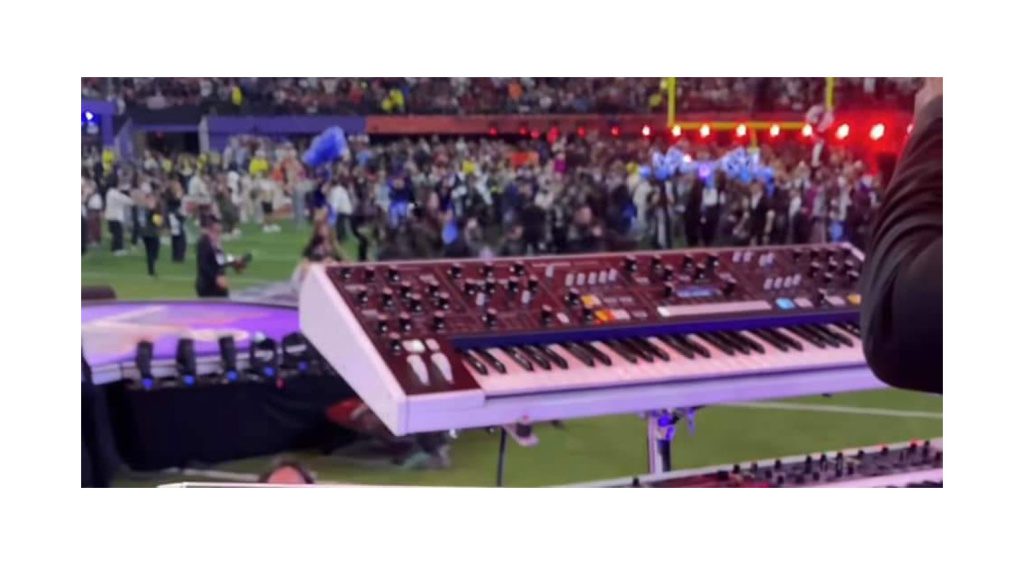
What’s coming?
Could Moog be returning to the market with a lovely new polysynth named Mirror? And could it possibly be a more mid-market machine rather than an aspirational premium instrument that only the few can afford? Maybe that’s the hope that InMusic brings to the table – an affordable poly-Moog.
The rumours, guesswork, and confident declarations from synth-heads will be abounding on social media until we get the official information. It’s certainly more exciting than who won the Football.

